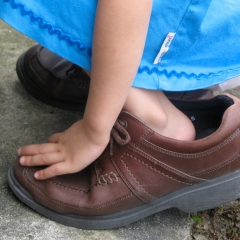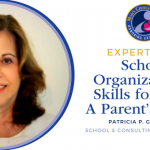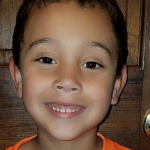 Elizabeth Kavan
Elizabeth Kavan
Media Specialist | Librarian
York Elementary School
York, NE
Buying a new pair of shoes is a yearly back-to-school tradition for many kids. They go to the store, try on a few styles, and eventually find something that fits them just right. We have to help our students understand that, just as they don’t wear the same shoe or clothing size as all their classmates, their education doesn’t have to be “one size fits all.”
 As educators, we’re constantly reminded that our students’ needs are different by the feedback we receive from their work. The trick is helping them understand that, for them to be successful, their assignments and workload might look different from other students’. According to Maximum Tier One: Improving Full Class Instruction by Pat Quinn, there are three specific areas to teach in regard to individual differences:
As educators, we’re constantly reminded that our students’ needs are different by the feedback we receive from their work. The trick is helping them understand that, for them to be successful, their assignments and workload might look different from other students’. According to Maximum Tier One: Improving Full Class Instruction by Pat Quinn, there are three specific areas to teach in regard to individual differences:
- Their differences in background information;
- Their differences in rate of learning (or how fast they learn); and
- Their individual differences in how they learn (multiple intelligences).
Here are some activities to try with students (or even parents!) to help them understand how every learner is unique.
Emergency Room
“Outstanding instruction requires that some students get stuff that other students don’t get,” Quinn writes in Maximum Tier One. The book goes on to illustrate these differences by using an activity called “Emergency Room,” designed to help students understand a more nuanced definition of “fairness.” Students are assigned a range of medical problems such as bloody nose, broken ankle, sprained wrist, and headache. When they come to “the doctor,” the teacher puts a bandage on each student’s wrist to “fix” all their problems. Obviously, a bandage does not fix most of these problems, but all students receive the same solution. The teacher follows up with a class discussion about how “fairness” doesn’t mean giving each person the same thing — it’s means giving each person what he or she needs.
Hot Potato Shoe
The Emergency Room illustration works well with older students or even parents, but it may not be as successful with younger kids. So another activity to illustrate this concept is to have students sit in a circle and take off one shoe. The teacher then turns on music, and the students play “hot potato” by handing their shoes around the circle. When the teacher shuts off the music, each student tries to put on the shoe he or she is now holding. Students will be amused by peers trying to put on shoes that are too small or too big. Ask, “Which would be fair? For everyone to get the same size or for each to get the size she needs?”
Multiple Intelligence Quiz
Students as young as first grade can evaluate multiple intelligences. Brain-Based Strategies to Reach Every Learner, by J. Diane Connell, has a multiple intelligence questionnaire designed specifically for kids. Students check the statements that relate to them, such as “I like art class” and “I enjoy putting puzzles together.” For scoring, the students add up the number of check marks they have in each area, illustrating different areas of strength. Instead of using the typical multiple intelligence language such as “interpersonal” or “kinesthetic,” the book uses kid-friendly language such as “people smart” and “body smart.” Consequently, it’s important to stress a growth mindset instead of a fixed mindset. Upon finding out they’re more of a certain kind of “smart” than another, some students don’t believe they have the ability to be successful in other areas. It’s crucial to emphasize that they can strengthen themselves in any area with effort and practice.
Though many students find it easy to reflect upon physical differences, internal differences are much harder to distinguish. Allowing time to teach students about these differences can be very important to their educational journey. Once they understand their differences are normal and grow to expect not everyone will receive the same things in the classroom, they, hopefully, will be able to focus on their own education paths. And, according to Quinn, this will “teach your students that you are ready to help ALL students learn.”
Photo “I’ll grow into em” by rumpleteaser. Used under a CC BY 2.0 license.
Elizabeth has a Bachelor’s Degree in Elementary Education from the University of Nebraska Lincoln and a Master’s in Curriculum and Instruction from the University of Nebraska at Kearney. She taught 5th grade for 4 years and now serves as the Media & Technology Specialist for over 580 students. She loves technology and loves to see the positive effect that it can have on students’ education.
View all posts by Elizabeth Kavan here.
This post was originally posted by Common Sense Media on 11/2/15.
 About Common Sense Media
About Common Sense Media
Common Sense Media is dedicated to improving the lives of kids and families by providing the trustworthy information, education, and independent voice they need to thrive in a world of media and technology. We exist because our kids are growing up in a culture that profoundly impacts their physical, social, and emotional well-being. We provide families with the advice and media reviews they need in order to make the best choices for their children. Through our education programs and policy efforts, Common Sense Media empowers parents, educators, and young people to become knowledgeable and responsible digital citizens. For more information, visit us at www.commonsense.org.






3 Comments on “One Size Doesn’t Fit All: 3 Activities to Help Kids Understand Learning Differences”
This sure seems a great way to teach
What an amazing way to teach differences in children. This should be taught in all schools
What an amazing way to teach differences in children. This post is going to be passed along